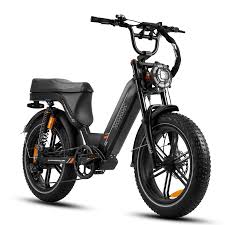One of the most common questions prospective electric bike (e-bike) owners have is about the range: how far they can travel on a single battery charge. The range of an e-bike depends on several factors, including the battery capacity, motor efficiency, level of pedal assistance, terrain, and riding conditions. This article explores these factors in detail to help you understand and estimate the range of your electric bike.
Factors Affecting Range
1. Battery Capacity:
The capacity of the electric bike battery is a primary factor influencing range. Battery capacity is measured in watt-hours (Wh), with higher capacity batteries typically providing longer ranges. For example, e-bikes with batteries ranging from 250Wh to 700Wh or more are common. A higher capacity battery can store more energy, allowing for longer rides on a single charge.
2. Motor Efficiency:
The efficiency of the electric motor plays a crucial role in determining range. Modern e-bike motors are designed to be highly efficient, converting battery power into propulsion with minimal energy loss. High-quality motors, such as mid-drive motors, are known for their efficiency and can contribute to extending the e-bike’s range.
3. Level of Pedal Assistance:
E-bikes offer different levels of pedal assistance, typically adjustable through a controller or display. The level of assistance chosen affects how much power the motor provides to assist your pedaling. Lower levels of assistance conserve battery power, while higher levels provide more assistance but may reduce range. Some e-bikes also offer a throttle option, allowing riders to engage the motor without pedaling, which can affect overall range.
4. Terrain and Riding Conditions:
The terrain you ride on significantly impacts your e-bike’s range. Riding on flat terrain consumes less battery power compared to uphill climbs or off-road trails. Similarly, windy conditions or riding into headwinds can increase energy consumption. Factors such as road surface, traffic conditions, and even rider weight can also influence range.
5. Riding Style and Speed:
Your riding style and speed affect how far you can travel on a single charge. Riding at higher speeds or consistently accelerating and braking can drain the battery faster. Smooth, steady riding at moderate speeds optimizes battery efficiency and extends range.
Estimating Range
1. Manufacturer Specifications:
Most e-bike manufacturers provide an estimated range based on standardized testing conditions. These conditions typically assume moderate pedal assistance, flat terrain, and optimal riding conditions. Manufacturer specifications can give you a baseline idea of what to expect from your e-bike’s range.
2. Real-World Factors:
While manufacturer estimates are useful, real-world range can vary based on your specific riding conditions and habits. Factors like frequent starts and stops, varying terrain, headwinds, and rider weight all impact actual range. It’s essential to consider these variables when estimating how far you can travel on a single charge.
3. Range Test:
To determine your e-bike’s real-world range, consider conducting a range test under typical riding conditions. Fully charge your battery, choose a route that resembles your regular riding environment, and note the distance covered before the battery needs recharging. This test can provide personalized insights into your e-bike’s range based on your specific usage patterns.
Tips for Maximizing Range
1. Use Lower Assistance Levels:
To extend your e-bike’s range, use lower levels of pedal assistance whenever possible. Start with a lower assistance setting and increase only when necessary, such as when climbing hills or facing strong headwinds.
2. Monitor Battery Level:
Keep an eye on your e-bike’s battery level using the display or controller. Modern e-bikes often have indicators that show remaining battery capacity and estimated range. Plan your rides accordingly to avoid running out of battery power unexpectedly.
3. Maintain Optimal Tire Pressure:
Proper tire inflation reduces rolling resistance, improving efficiency and extending range. Check your tire pressure regularly and inflate to the recommended PSI specified by the manufacturer.
4. Ride Efficiently:
Practice efficient riding techniques, such as maintaining a steady pace and avoiding sudden acceleration or braking. Anticipate changes in terrain or traffic to optimize energy use and maximize range.
Conclusion
The range of an electric bike is influenced by various factors, including battery capacity, motor efficiency, riding conditions, and personal riding habits. By understanding these factors and estimating your e-bike’s range, you can plan your rides effectively and enjoy the benefits of electric biking. Regularly monitor battery levels, adjust pedal assistance settings, and adopt efficient riding practices to maximize your e-bike’s range and enhance your riding experience.



